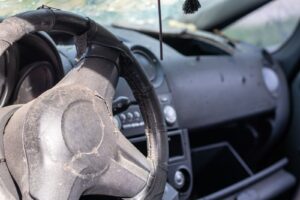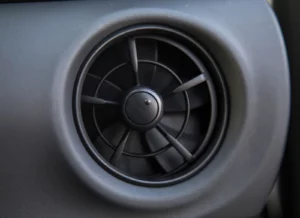A car accident can be a jarring and confusing event for anyone. A person may have questions about what happened, how it happened, and what needs to be done next.
Experienced professionals in the collision repair field have seen every kind of damage imaginable. They understand the different types of motor vehicle collisions and can help people feel more informed about their situation. This knowledge can also help them understand the repair process better.
The process of assessing damage goes way back to the body shop floor. Countless hours are spent assessing damage and guiding vehicle owners through the repair journey.
When a car is brought in after an incident, the focus is on more than just a dented fender. Professionals analyze the angle of impact, the forces involved, and how they relate to the specific vehicle collision types.
This is because a front-end impact requires a different repair strategy than a sideswipe. The specifics of what happens to a car and what it means for getting it back on the road safely will be explored in this article.
Rear-End Collisions
Rear-end impacts are some of the most common car accidents we deal with. They happen when one vehicle strikes the back of another. The severity can vary greatly from a minor fender bender to a catastrophic high-speed crash.
These types of motor vehicle collisions often happen in stop-and-go traffic on highways or at intersections. Even at low speeds, they can cause significant damage to the bumper, trunk lid, and frame. The occupants can also suffer whiplash injuries due to the sudden forward and backward movement of the head.
- The front vehicle is usually stationary or moving slowly.
- The impact can cause significant damage even at low speeds.
- Vehicle occupants can suffer whiplash and other neck injuries.
Side-Impact Collisions
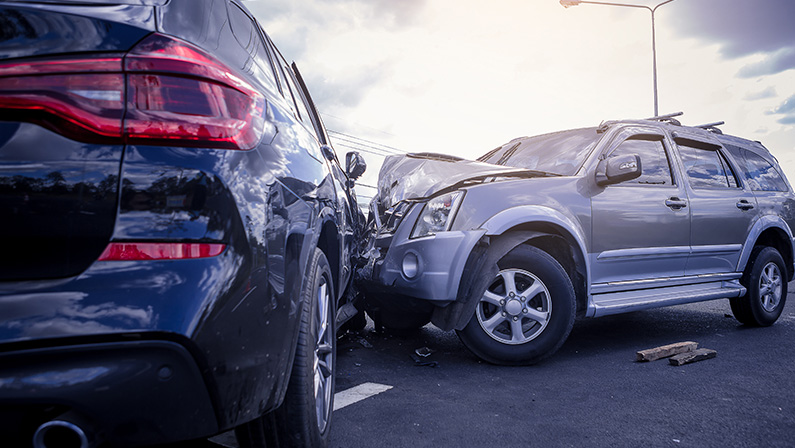
Also known as T-bone or broadside collisions, side-impact collisions are some of the most dangerous types of motor vehicle accidents. They occur when the front of one vehicle hits the side of another.
This often happens at intersections when a driver fails to yield or runs a red light or stop sign. The passenger compartment offers less protection on the sides compared to the front or back. Thus, the forces involved can be intense and lead to severe damage to the vehicle’s frame, doors, and pillars.
Vehicle Rollovers
A vehicle rollover happens when a car flips onto its side or roof. These are some of the most complex car crash types. They can be triggered by a number of factors, including a high-speed car crash collision, an abrupt turn, or swerving to avoid something in the road. SUVs and other vehicles with a higher center of gravity are more prone to rolling over.
The damage from a rollover is usually widespread, affecting the roof pillars, doors, and windows. The integrity of the vehicle’s structure can be compromised, which makes proper repair and reconstruction very important.
Head-On Collisions
A head-on collision occurs when the front ends of two vehicles collide. These types of auto accidents are typically the most destructive and dangerous. They often occur when a driver crosses the centerline or travels the wrong way on a highway.
The combined speeds of both vehicles create a massive amount of force. The damage is concentrated at the front of both cars, affecting the engine, transmission, and frame.
Multi-Vehicle Collisions
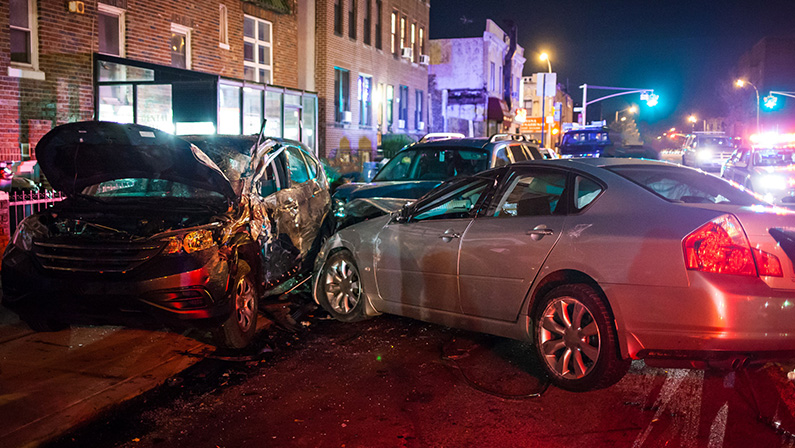
A multi-vehicle collision involves three or more vehicles. These complex car crashes can start as a simple rear-end or sideswipe accident and then cascade into a larger incident. They are most common on busy highways where traffic is heavy and speeds are high.
Determining fault can be challenging in these situations because numerous factors are at play. The damage can vary significantly from vehicle to vehicle, depending on its position and the order of impact.
- These incidents are also known as pile-ups or chain-reaction crashes.
- They often occur in heavy traffic or during bad weather conditions.
- Multiple impacts mean the damage can be complex and widespread.
Sideswipe Accidents
A sideswipe accident is when the sides of two vehicles scrape against each other. This can occur when a driver drifts into an adjacent lane without checking their surroundings. It is a very common motor vehicle collision.
These crashes usually happen on multi-lane roads or highways. While they may seem minor, the damage can still be significant. The impacts can cause long scrape marks, dents, and even tear off side mirrors.
Low-Speed Collisions
Low-speed collisions are accidents that occur at very low speeds, typically in parking lots or congested stop-and-go traffic. While the damage may appear minimal, these types of car accidents can still cause damage to bumpers, lights, and other components, such as sensors.
Modern cars have complex systems like cameras and proximity sensors built into the bumpers. Even a small impact can damage these expensive components.
Blind Spot Accidents
Blind spot accidents happen when a driver tries to change lanes without seeing a car in their blind spot. This motor vehicle crash often results in a sideswipe or a T-bone impact if the other car swerves. These types of vehicle collisions can be avoided with proper use of mirrors and looking over your shoulder.
Modern cars often have blind spot monitoring systems to help prevent these incidents.
- The driver is unable to see another vehicle in their side mirror.
- This can lead to a sideswipe or a more severe side-impact crash.
- The use of mirrors and a head check can prevent these accidents.
- Blind spot monitors are a great safety feature to have.
Single-Vehicle Accidents
A single-vehicle accident is an incident that involves only one vehicle. This can include running off the road, hitting a tree, a pole, a deer, or another stationary object. The damage in these types of motor vehicle collisions is often severe. The driver may have lost control due to a number of reasons, including speeding, drowsy driving, or distracted driving.
Merging and Lane-Change Accidents
Merging and lane-change accidents happen when a driver fails to check for an opening or misjudges the speed of another vehicle. They are a common sight on highways and can lead to sideswipes or more serious collisions. The accidents can happen when someone merges from an on-ramp or when changing lanes on a multi-lane road. Proper use of turn signals and mirrors is crucial in avoiding these crashes.
Accidents Involving Public Transportation
Public transportation accidents are collisions that involve buses, taxis, or trains. The results of these car crashes can be more complex due to the number of people involved. The investigation can be extensive and involve multiple parties.
- Bus Accidents: A bus accident can be a single vehicle crash or a collision with another vehicle. Due to their size, the buses can cause significant damage to smaller vehicles.
- Taxi Accidents: Taxi accidents are generally similar to other passenger car collisions, but can also involve ride-sharing services. These accidents can have complex insurance claims due to the commercial nature of the vehicle.
- Train Accidents: A train collision is a very serious event. These accidents are rare but are often very severe.
- Light Rail Accidents: Light rail accidents can occur at intersections with other vehicles or pedestrians. These can cause widespread damage to a car.
- Ferry Accidents: Ferry accidents happen when a car on a ferry is involved in an incident. The dynamics of the water can make these accidents unique.
- Shuttle Accidents: Shuttle accidents can involve both airport shuttles and hotel shuttles. The causes can be similar to bus accidents.
The Road to Recovery and Repair
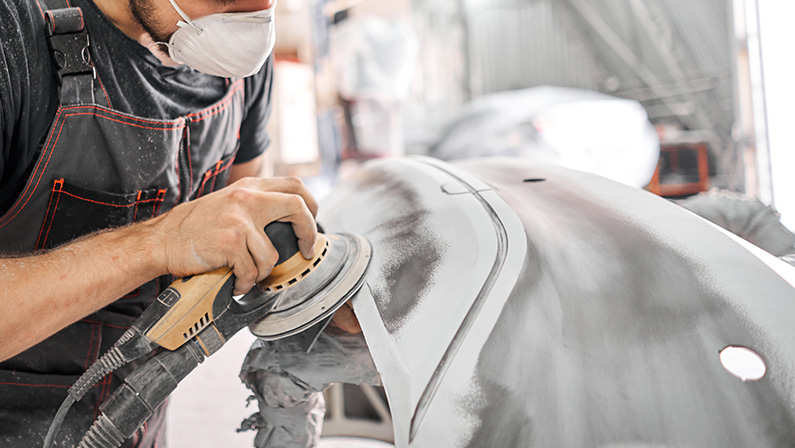
After an accident of any kind, the first priority is your safety and well-being. Once you have handled that, your thoughts will turn to your vehicle. Knowing the vehicle collision types is the first step in understanding the repair process. The road to recovery for your car can be a smooth one when you choose the right partner.
We know how stressful it is when your car is damaged. The good news is that we are here to help.
Status Automotive & Collision is the expert in handling all of these types of vehicle collisions. We possess the knowledge, tools, and experience to restore your vehicle to its pre-accident condition. Our team handles everything from minor dents to major frame repair. We are the leading repair shop for collision in Houston, TX. Contact us today and let us handle the repair. We will make the process simple and stress-free for you.


